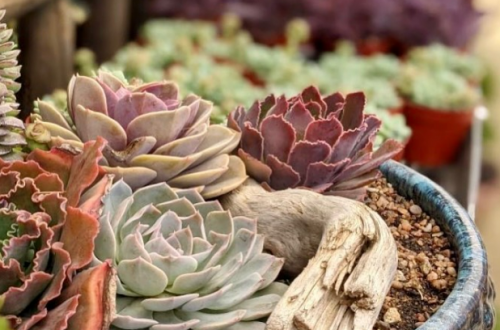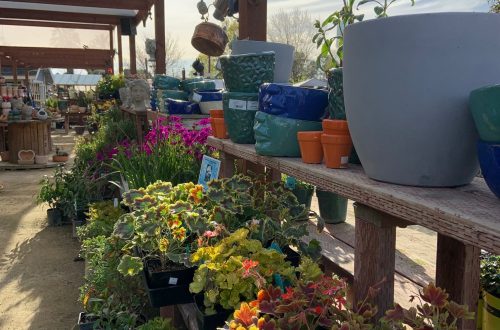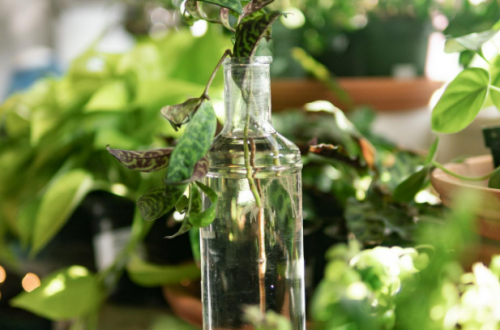Whether you are just embarking on your plant parenthood journey, or are already into starting your green family, understanding the fundamental pillars of plant care – light, water and soil – will better ensure your success.
To get started, it first helps to understand how plants use the process of photosynthesis in order to understand the importance of the balance between these three elements. In this process, the leaves act as solar panels, capturing sunlight and converting it into energy by using carbon dioxide from the air and water from the soil. The resulting process is glucose (sugar) energy for the plant and oxygen for us. It’s a delicate balance between how much light the plant receives and how much water it needs to perform this process.

Light & Water –
When a plant’s leaves are receiving adequate light for photosynthesis to occur, its roots draw the corresponding amount of water from the soil. It really is an intricate coordination of moving parts, with needs that change depending on the conditions. For example, in optimum conditions, a plant is receiving just the right amount of light and water in perfect balance. In this situation a plant will thrive and grow.

With houseplants we are responsible for orchestrating this delicate balance and the three pillars, light, water and soil, are in our hands. So let’s take a look at a plant such as a pothos, a tropical plant that naturally lives outdoors in warm, moist environments. In this environment the pothos will grow best in bright, dappled light, best protected from harsh sunlight by a canopy of other plants. In tropical environments it rains a lot, sometimes daily, so the plant is getting plenty of water. This happy, healthy plant is receiving a perfect balance of light and water to photosynthesis year round and can potentially grow several feet per year.

Now lets look at the same plant brought indoors as a houseplant in Sacramento. Pothos grow well outside in dappled light so this plant will also grow well as a houseplant in a room that gets moderate to bright light. As a side note, let’s define what moderate to bright indoor light is. Bright light can be ascertained by seeing if the light from the nearby window casts a shadow where the plant is situated. See Jasmine’s Tip Tuesday video below. Moderate light would be within a few feet of where the shadow was cast.
In our example, let’s assume it’s summer in Sacramento and we’re experiencing 6 months of cloudless skies and the room where the potted pothos is living is receiving plenty of light. Our pothos friend will be drawing up plenty of water to balance out all that sunlight for photosynthesis energy production. You may find it requiring water more than once a week.
Fast forward to winter in Sacramento with shorter days and cloudy skies. Our friend the pothos will receive far less light and therefore require less water, since photosynthesis has slowed dramatically. If it receives more water than it can handle when it doesn’t need it for energy production, the soil will stay wet for too long and the roots can develop rot, ultimately affecting the health of the plant. So we advise to still check your plant weekly, but you may not have to water for another week.
Soil – The Third Pillar
Now lets discuss the optimum soil to use for your houseplants. If your plant is tropical, and therefore similar to our pothos example above, then utilizing a potting soil that contains a high ratio of organic material that retains moisture will be best. This water retention will make sure that the soil does not dry out quickly and that the roots stay moist.
In contrast, if the plant in question is a Sanseveria, commonly referred to as a snake plant, then we need to adjust the soil medium. Sanseveria perform a slightly different photosynthesis form. Since this type of plant originated in more arid environments, plants like these open their cells at night and store the carbon dioxide until the next day to avoid water loss. Photosynthesis is slower, therefore they need less water and their growth is also slower. Soil blends for this type of plant need to contain more gravel and grit to allow water to drain more quickly. A quality cactus and succulent soil is ideal in this example.

Bonus Tip
Are you a nurturing plant parent that loves to water? If you find that your need to nurture outweighs the plants need for water, then adjusting your soil blend may be the answer. With what you’ve learned in this post, you now know that too much water can be as damaging as not enough. You also learned that soils with high organic material retain moisture and those with more sand and gravel drain quicker. So if you love to water more frequently than needed, just adjust your soil blend to include more grit. You can blend potting soil and cactus soil at ratios of your choosing to create your own perfect blend. To get started, be sure to ask us which soil we recommend for your plant in question.
Happy Plant Parenting!





